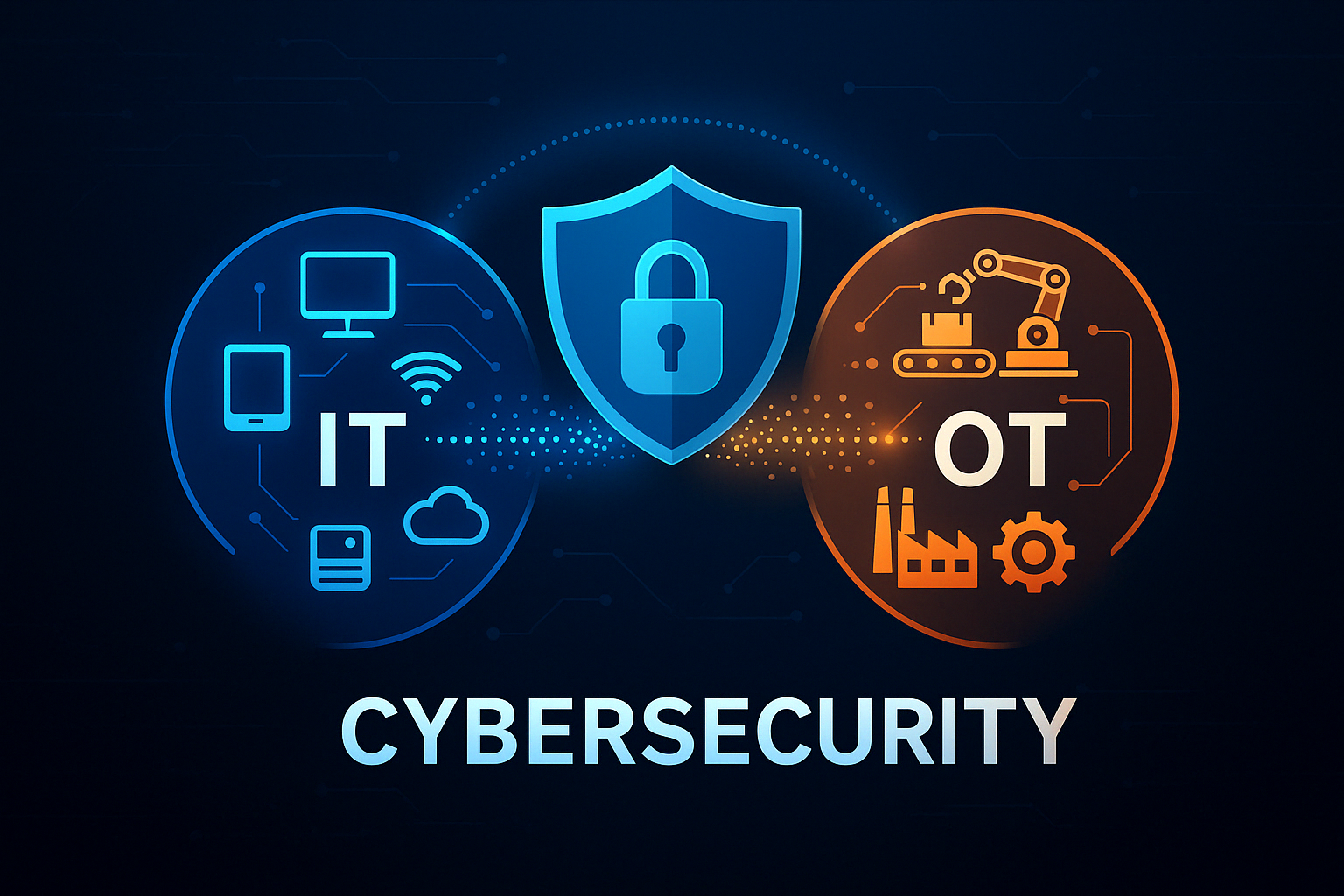The convergence of Information Technology (IT) and Operational Technology (OT) is no longer a concept reserved for large enterprises—it’s becoming essential for small to mid-sized businesses looking to modernize, streamline, and stay secure in a rapidly evolving digital landscape.
According to Fortinet, the benefits of bringing IT and OT together can far outweigh the risks, especially when supported by robust cybersecurity infrastructure. For organizations with limited internal cybersecurity staffing, a Virtual Security Operations Center (vSOC) provides a scalable, cost-effective path to 24/7 monitoring, threat detection, and rapid incident response across both environments.
But like any major technology shift, preparation is key.
Understanding the Risks of IT/OT Integration
IT and OT have historically operated in silos for a reason. IT focuses on data integrity and availability; OT, on continuous uptime and physical process control. If poorly managed, convergence can inadvertently cause more harm than good. Risks include:
- Disrupting production workflows by applying patches to ICS/SCADA systems without accounting for uptime requirements.
- Over-integrating access controls, creating unnecessary exposure by using the same user authentication system across both environments.
- Bricking PLCs and other critical OT devices due to incompatible IT practices.
The root issue? A shortage of cyber professionals trained in OT environments. Without experienced personnel, organizations often overlook the nuances that make OT security distinct—and vital.
The Opportunity: Streamlined, Smarter Security
When done right, IT/OT convergence brings tremendous value:
- Unified device management across IT and OT environments.
- Faster threat detection through correlated event data from both domains.
- Improved endpoint control and ability to deploy deception technologies.
- Centralized monitoring and response—especially when using a vSOC provider.
A vSOC not only fills the expertise gap, but also ensures around-the-clock protection without the need for in-house staffing. With built-in scalability, it allows organizations to evolve their defenses alongside digital transformation goals.
Getting It Right: Recommendations for a Secure Convergence
To ensure a safe and effective convergence strategy, organizations should:
- Hire or consult OT security experts to guide the planning and execution.
- Leverage a vSOC to provide continuous, expert monitoring without the overhead.
- Implement network segmentation to isolate IT and OT environments post-convergence.
- Harden infrastructure by accounting for IIoT and 5G integrations, which expand the attack surface.
- Practice disciplined patching and change control, especially within OT systems.
Final Thought: Opportunity, With Guardrails
The convergence of IT and OT isn’t just an opportunity—it’s an imperative for competitive operations. But the benefits only come when security is built into every step of the process. With proper segmentation, trained personnel, and the right technology partners—such as a vSOC from The Saturn Partners—organizations can bridge the IT/OT gap without compromising safety, reliability, or uptime.
Contact The Saturn Partners today for a free consultation.

